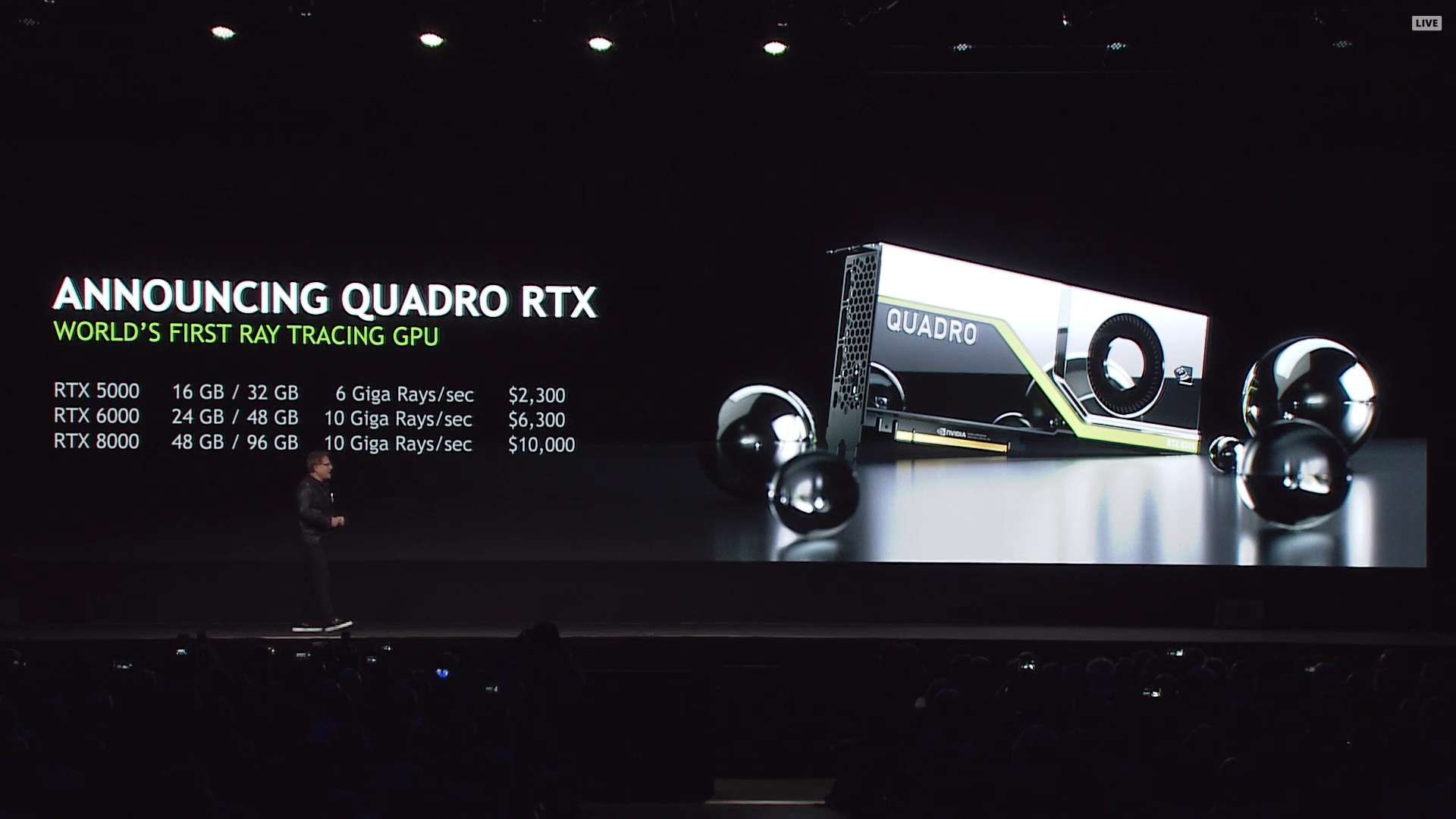Today, during an event at Siggraph 2018 Nvidia presented the Quadro RTX card sporting the new Turing architecture, promising to unlock the power of real-time Ray Tracing for video games and film.
The card family can handle up to 10 Giga Rays per second (ten million rays), and 16 TFLOPS of computing power. The Turing GPU architecture is defined as the "greatest leap" since the introduction of CUDA GPU in 2006.
Among the features supported are interoperable rasterization, ray tracing, compute, and AI.
The entry point price for the Quadro RTX 500 will be $2,300 for a 16 GB frame buffer and 6 Giga Rays per second. The RTX 600 will cost $6,300 for a 24 GB frame buffer and 10 Giga Rays per second. The big boy RTX 800 will also do 10 Giga Rays per second but will come with a 48 GB frame buffer for $10,000.
Thanks to the technology supported by the architecture, including the new DLAA anti-aliasing tech, Turing can improve rendering times of real-time ray tracing over Pascal "by a factor of six."
Among the promises made on stage, we hear that in a few years this kind of technology aims to allow games to look like films. While this kind of card won't have giant immediate effects on the gaming industry due to its steep price, it's certainly promising for the medium-term future.
Below you can check out a couple of demos showcasing what ray tracing effects look like in real time, a trailer created by Porsche, and the same Porsche 911 Speedster Concept rendered in real time.


